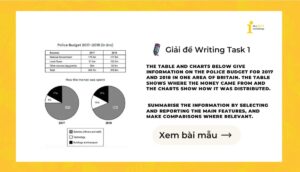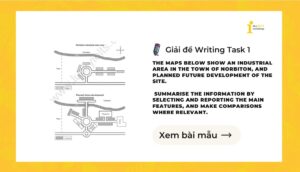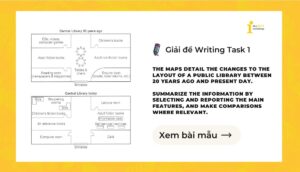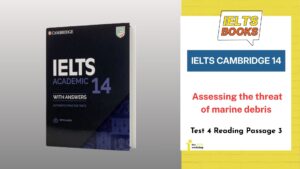Bài viết cung cấp đáp án và hướng dẫn giải chi tiết IELTS Cambridge 15 Test 1 Reading Passage 1: Nutmeg – a valuable spice giúp bạn có thêm nhiều góc nhìn mới và nâng cao kĩ năng của mình.
Đáp án IELTS Cambridge 15 Test 1 Reading Passage 1
| Câu hỏi | Đáp án |
|---|---|
| 1 | oval |
| 2 | husk |
| 3 | seed |
| 4 | mace |
| 5 | FALSE |
| 6 | NOT GIVEN |
| 7 | TRUE |
| 8 | Arabs |
| 9 | plague |
| 10 | lime |
| 11 | Run |
| 12 | Mauritius |
| 13 | tsunami |
Phân tích chi tiết IELTS Cambridge 15 Test 1 Reading Passage 1
Question 1. oval
Câu hỏi: The leaves of the tree are …….. in shape. (Lá cây nhễ khấu đậu có hình dạng ……..)
Vị trí: Đoạn A.
Transcript: The tree is thickly branched with dense foliage of tough, dark green oval leaves, and produces small, yellow, bell-shaped flowers and pale yellow pear-shaped fruits.
Phân tích: Cây nhục khấu đậu có lá xanh đậm, dày và hình bầu dục – “oval leaves”.
Question 2. husk
Câu hỏi: The ……… surrounds the fruit and breaks open when the fruit is ripe. (Bộ phận ……… bao quanh quả và nứt ra khi quả chín.)
Vị trí: Đoạn A.
Transcript: The fruit is encased in a fleshy husk. When the fruit is ripe, this husk splits into two halves…
Phân tích: Vỏ ngoài bên ngoài quả được gọi là “husk”, nẵn khi chín sẽ tách ra.
Question 3. seed
Câu hỏi: The ……… is used to produce the spice nutmeg. (Bộ phận …….. được sử dụng để sản xuất gia vị nhục khấu đậu.)
Vị trí: Đoạn A.
Transcript: These are the sources of the two spices nutmeg and mace, the former being produced from the dried seed and the latter from the aril.
Phân tích: “the former” = nutmeg được sản xuất từ hạt sấy khô >> seed.
Question 4. mace
Câu hỏi: The covering known as the aril is used to produce ………. (Lớp bao quanh có tên “aril” được dùng để sản xuất …………)
Vị trí: Đoạn A.
Transcript: These are the sources of the two spices nutmeg and mace, the former being produced from the dried seed and the latter from the aril.
Phân tích: Gia vị mace được chế biến từ lớp vỏ aril bên ngoài hạt.
Question 5. FALSE
Câu hỏi: In the Middle Ages, most Europeans knew where nutmeg was grown. (Vào thời Trung cổ, hầu hết người châu Âu đều biết nơi trồng hạt nhục đậu khấu.)
Vị trí: Đoạn B.
Transcript: Throughout this period, the Arabs were the exclusive importers of the spice to Europe. They sold nutmeg for high prices to merchants based in Venice, but they never revealed the exact location of the source of this extremely valuable commodity.
Phân tích: Người Ả Rập giữ bí mật nguồn gốc nên chưa ai biết đến nơi trồng.
Question 6. NOT GIVEN
Câu hỏi: The VOC was the world’s first major trading company. (VOC là công ty thương mại lớn đầu tiên thế giới.)
Vị trí: Đoạn D.
Transcript: VOC was the richest commercial operation in the world.
Phân tích: Bài đề cập tới VOC là giàu nhất, nhưng không nói đó là “đầu tiên”.
Question 7. TRUE
Câu hỏi: Following the Treaty of Breda, the Dutch had control of all the islands where nutmeg grew. (Sau Hiệp ước Breda, người Hà Lan kiểm soát toàn bộ đảo trồng nhục khấu đậu.)
Vị trí: Đoạn E.
Transcript: There was only one obstacle to Dutch domination. One of the Banda Islands, a sliver of land called Run, only 3 km long by less than 1 km wide, was under the control of the British. After decades of fighting for control of this tiny island, the Dutch and British arrived at a compromise settlement, the Treaty of Breda, in 1667. Intent on securing their hold over every nutmeg-producing island, the Dutch offered a trade: if the British would give them the island of Run, they would in turn give Britain a distant and much less valuable island in North America. The British agreed.
Phân tích: Sau khi trao đổi Run, Hà Lan đã nằm toàn bộ đảo sinh trưởng nhục khấu đậu.
Question 8. Arabs
Câu hỏi: Arabs Middle Ages: Nutmeg was brought to Europe by the ………. (Người mang hạt nhục khấu đậu đến châu Âu vào Thời Trung cổ là ai?)
Vị trí: Đoạn B.
Transcript: Throughout this period, the Arabs were the exclusive importers of the spice to Europe. They sold nutmeg for high prices to merchants based in Venice, but they never revealed the exact location of the source of this extremely valuable commodity.
Phân tích: Người Ả Rập độc quyền mang hạt này đến châu Âu.
Question 9. plague
Câu hỏi: 17th Century: Demand for nutmeg grew, as it was believed to be effective against the disease known as the ………. (Hạt nhục khấu đậu được cho rằng chữ được bệnh gì?)
Vị trí: Đoạn D.
Transcript: At the same time, thousands of people across Europe were dying of the plague, a highly contagious and deadly disease. Doctors were desperate for a way to stop the spread of this disease, and they decided nutmeg held the cure. Everybody wanted nutmeg, and many were willing to spare no expense to have it.
Phân tích: Mọi người tin nhục khấu chữ được bệnh “plague” nên nhu cầu tăng vọt.
Question 10. lime
Câu hỏi: 17th Century: the Dutch put ……… on nutmeg to avoid it being cultivated outside the islands. (Người Hà Lan đã làm gì để tránh hạt này bị gieo ở ngoài đảo?)
Vị trí: Đoạn E.
Transcript: In addition, all exported nutmeg was covered with lime to make sure there was no chance a fertile seed which could be grown elsewhere would leave the islands.
Phân tích: Hạt nhục khấu được phủ vôi để không gieo được ở nơi khác.
Question 11. Run
Câu hỏi: 17th Century: the Dutch finally obtained the island of ……… from the British. (Người Hà Lan cuối cùng đã có được hòn đảo nào từ tay Anh?)
Vị trí: Đoạn E.
Transcript: There was only one obstacle to Dutch domination. One of the Banda Islands, a sliver of land called Run, only 3 km long by less than 1 km wide, was under the control of the British. After decades of fighting for control of this tiny island, the Dutch and British arrived at a compromise settlement, the Treaty of Breda, in 1667. Intent on securing their hold over every nutmeg-producing island, the Dutch offered a trade: if the British would give them the island of Run, they would in turn give Britain a distant and much less valuable island in North America. The British agreed.
Phân tích: Hai bên thành đạt trao đổi: Anh trao Run cho Hà Lan.
Question 12. Mauritius
Câu hỏi: 1770: nutmeg plants were secretly taken to ………. (Cây nhục khấu đậu được mang đến đâu một cách bí mật?)
Vị trí: Đoạn F.
Transcript: Then, in 1770, a Frenchman named Pierre Poivre successfully smuggled nutmeg plants to safety in Mauritius, an island off the coast of Africa.
Phân tích: Pierre Poivre đã buôn lậu cây nhục khấu đậu sang Mauritius.
Question 13. tsunami
Phân tích: Dù nguyên nhân gián tiếp là phun trào, nhưng trực tiếp gây thiệt hại là do tsunami.
Câu hỏi: 1778: half the Banda Islands’ nutmeg plantations were destroyed by a ………. (Nguyên nhân khiến một nửa vườn nhục khấu đậu ở đảo Banda bị phá hủy là gì?)
Vị trí: Đoạn F.
Transcript: Next, in 1778, a volcanic eruption in the Banda region caused a tsunami that wiped out half the nutmeg groves.
Bản dịch chi tiết IELTS Cambridge 15 Test 1 Reading Passage 1
A.
The nutmeg tree, Myristica fragrans, is a large evergreen tree native to Southeast Asia. Until the late 18th century, it only grew in one place in the world: a small group of islands in the Banda Sea, part of the Moluccas – or Spice Islands – in northeastern Indonesia. The tree is thickly branched with dense foliage of tough, dark green oval leaves, and produces small, yellow, bell-shaped flowers and pale yellow pear-shaped fruits. The fruit is encased in a fleshy husk. When the fruit is ripe, this husk splits into two halves along a ridge running the length of the fruit. Inside is a purple-brown shiny seed, 2–3 cm long by about 2 cm across, surrounded by a lacy red or crimson covering called an ‘aril’. These are the sources of the two spices nutmeg and mace, the former being produced from the dried seed and the latter from the aril.
(Cây nhục đậu khấu (Myristica fragrans) là loài cây xanh quanh năm có nguồn gốc ở khu vực Đông Nam Á. Trước cuối thế kỷ 18, nó chỉ được tìm thấy tại một cụm đảo nhỏ ở biển Banda, thuộc quần đảo Moluccas (còn gọi là quần đảo Gia vị) nằm phía đông bắc Indonesia. Cây có nhiều nhánh với tán lá rậm, phiến lá cứng màu xanh sẫm, hình bầu dục; hoa nhỏ hình chuông màu vàng và quả màu vàng nhạt, giống hình quả lê. Quả được bọc trong lớp vỏ dày. Khi chín, lớp vỏ này tự tách làm hai theo đường gân chạy dọc thân quả. Bên trong là một hạt bóng màu nâu tím, dài khoảng 2–3cm, rộng khoảng 2cm, bao quanh bởi một lớp lưới đỏ gọi là “aril”. Hai loại gia vị nổi tiếng, nutmeg và mace, đều được chiết xuất từ đây – hạt khô cho nutmeg và lớp aril tạo ra mace.)
Từ vựng cần nhớ:
- evergreen: (cây) thường xanh quanh năm
- fleshy: mọng nước, có phần thịt dày
B.
Nutmeg was a highly prized and costly ingredient in European cuisine in the Middle Ages, and was used as a flavouring, medicinal, and preservative agent. Throughout this period, the Arabs were the exclusive importers of the spice to Europe. They sold nutmeg for high prices to merchants based in Venice, but they never revealed the exact location of the source of this extremely valuable commodity. The Arab-Venetian dominance of the trade finally ended in 1512, when the Portuguese reached the Banda Islands and began exploiting its precious resources.
(Trong thời Trung cổ, nhục đậu khấu là loại gia vị đắt đỏ và rất được ưa chuộng trong ẩm thực châu Âu. Nó được dùng làm hương liệu, dược liệu và chất bảo quản. Suốt giai đoạn đó, người Ả Rập là những người duy nhất nhập khẩu loại gia vị này vào châu Âu. Họ bán lại với giá cao cho các thương nhân Venice, nhưng luôn giữ kín địa điểm thực sự nơi loại gia vị quý hiếm này được trồng. Sự kiểm soát thị trường giữa người Ả Rập và Venice kết thúc vào năm 1512, khi người Bồ Đào Nha đến quần đảo Banda và bắt đầu khai thác nguồn tài nguyên đắt giá này.)
Từ vựng cần nhớ:
- prized: được đánh giá cao, rất quý giá
- commodity: mặt hàng thương mại)
C.
Always in danger of competition from neighbouring Spain, the Portuguese began subcontracting their spice distribution to Dutch traders. Profits began to flow into the Netherlands, and the Dutch commercial fleet swiftly grew into one of the largest in the world. The Dutch quietly gained control of most of the shipping and trading of spices in Northern Europe. Then, in 1580, Portugal fell under Spanish rule, and by the end of the 16th century the Dutch found themselves locked out of the market. As prices for pepper, nutmeg, and other spices soared across Europe, they decided to fight back.
(Do luôn phải đối mặt với nguy cơ cạnh tranh từ Tây Ban Nha, người Bồ Đào Nha đã nhượng lại quyền phân phối gia vị cho các thương nhân Hà Lan. Lợi nhuận nhanh chóng đổ về Hà Lan, và đội tàu buôn của họ nhanh chóng trở thành lực lượng lớn mạnh trên thế giới. Người Hà Lan âm thầm chiếm lĩnh hoạt động vận chuyển và buôn bán gia vị khắp Bắc Âu. Tuy nhiên, vào năm 1580, Bồ Đào Nha rơi vào tay Tây Ban Nha, khiến Hà Lan bị loại khỏi thị trường. Trước tình hình giá tiêu, nhục đậu khấu và các loại gia vị khác tăng vọt trên toàn châu Âu, người Hà Lan quyết định đáp trả.)
Từ vựng cần nhớ:
- subcontract: ủy quyền lại, giao thầu phụ
- soar: tăng vọt, leo thang
D.
In 1602, Dutch merchants founded the VOC, a trading corporation better known as the Dutch East India Company. By 1617, the VOC was the richest commercial operation in the world. The company had 50,000 employees worldwide, with a private army of 30,000 men and a fleet of 200 ships. At the same time, thousands of people across Europe were dying of the plague, a highly contagious and deadly disease. Doctors were desperate for a way to stop the spread of this disease, and they decided nutmeg held the cure. Everybody wanted nutmeg, and many were willing to spare no expense to have it. Nutmeg bought for a few pennies in Indonesia could be sold for 68,000 times its original cost on the streets of London. The only problem was the short supply. And that’s where the Dutch found their opportunity.
(Năm 1602, thương nhân Hà Lan thành lập VOC – công ty Đông Ấn Hà Lan. Đến năm 1617, đây là doanh nghiệp thương mại giàu nhất thế giới, có 50.000 nhân viên toàn cầu, 30.000 lính đánh thuê và 200 tàu thuyền. Trong khi đó, châu Âu đang hứng chịu đại dịch – căn bệnh chết người lây lan cực nhanh. Các bác sĩ tuyệt vọng tìm cách ngăn dịch lan rộng và tin rằng nhục đậu khấu là phương thuốc cứu nguy. Ai cũng mong sở hữu loại gia vị này và sẵn sàng trả bất kỳ giá nào. Một hạt nhục đậu khấu chỉ tốn vài xu ở Indonesia nhưng có thể bán giá cao gấp 68.000 lần tại London. Vấn đề duy nhất: nguồn cung rất hạn chế. Và đây chính là thời cơ cho người Hà Lan.)
Từ vựng cần nhớ:
- plague: dịch bệnh chết người, đại dịch
- spare no expense: không tiếc tiền của
E.
The Banda Islands were ruled by local sultans who insisted on maintaining a neutral trading policy towards foreign powers. This allowed them to avoid the presence of Portuguese or Spanish troops on their soil, but it also left them unprotected from other invaders. In 1621, the Dutch arrived and took over. Once securely in control of the Bandas, the Dutch went to work protecting their new investment. They concentrated all nutmeg production into a few easily guarded areas, uprooting and destroying any trees outside the plantation zones. Anyone caught growing a nutmeg seedling or carrying seeds without the proper authority was severely punished. In addition, all exported nutmeg was covered with lime to make sure there was no chance a fertile seed which could be grown elsewhere would leave the islands. There was only one obstacle to Dutch domination. One of the Banda Islands, a sliver of land called Run, only 3 km long by less than 1 km wide, was under the control of the British. After decades of fighting for control of this tiny island, the Dutch and British arrived at a compromise settlement, the Treaty of Breda, in 1667. Intent on securing their hold over every nutmeg-producing island, the Dutch offered a trade: if the British would give them the island of Run, they would in turn give Britain a distant and much less valuable island in North America. The British agreed. That other island was Manhattan, which is how New Amsterdam became New York. The Dutch now had a monopoly over the nutmeg trade which would last for another century.
(Các tiểu vương địa phương cai trị quần đảo Banda luôn giữ chính sách trung lập với các cường quốc, nhờ đó tránh được sự hiện diện của lính Bồ Đào Nha hay Tây Ban Nha. Nhưng điều này cũng khiến họ không được bảo vệ khỏi những kẻ xâm chiếm khác. Năm 1621, người Hà Lan đến và tiếp quản hoàn toàn. Họ nhanh chóng bảo vệ khoản đầu tư bằng cách dồn toàn bộ cây nhục đậu khấu vào vài khu vực dễ kiểm soát, phá bỏ tất cả cây trồng tự phát bên ngoài vùng trồng chính. Ai bị phát hiện mang hạt giống mà không được phép sẽ bị xử phạt nặng. Hơn nữa, tất cả hạt xuất khẩu đều được phủ vôi nhằm ngăn không cho chúng nảy mầm ở nơi khác. Tuy nhiên, vẫn còn một trở ngại: đảo Run nhỏ bé, chỉ dài 3 km, rộng dưới 1 km, thuộc quyền Anh. Sau hàng thập kỷ tranh chấp, năm 1667, hai bên đạt được thỏa thuận: Anh nhường đảo Run cho Hà Lan, đổi lại lấy một hòn đảo nhỏ ít giá trị hơn ở Bắc Mỹ – chính là đảo Manhattan. Và như vậy, Hà Lan độc quyền thương mại nhục đậu khấu trong một thế kỷ tiếp theo.)
Từ vựng cần nhớ:
- uproot: nhổ tận gốc
- monopoly: độc quyền thương mại
F.
Then, in 1770, a Frenchman named Pierre Poivre successfully smuggled nutmeg plants to safety in Mauritius, an island off the coast of Africa. Some of these were later exported to the Caribbean where they thrived, especially on the island of Grenada. Next, in 1778, a volcanic eruption in the Banda region caused a tsunami that wiped out half the nutmeg groves. Finally, in 1809, the British returned to Indonesia and seized the Banda Islands by force. They returned the islands to the Dutch in 1817, but not before transplanting hundreds of nutmeg seedlings to plantations in several locations across southern Asia. The Dutch nutmeg monopoly was over. Today, nutmeg is grown in Indonesia, the Caribbean, India, Malaysia, Papua New Guinea and Sri Lanka, and world nutmeg production is estimated to average between 10,000 and 12,000 tonnes per year.
(Năm 1770, Pierre Poivre – một người Pháp – đã bí mật đưa cây nhục đậu khấu đến đảo Mauritius ngoài khơi châu Phi. Sau đó, một phần được chuyển đến vùng Caribbean, nơi chúng sinh trưởng mạnh, đặc biệt tại đảo Grenada. Năm 1778, núi lửa phun trào tại khu vực Banda gây ra sóng thần, quét sạch một nửa vườn cây nhục đậu khấu. Đến năm 1809, người Anh trở lại Indonesia và chiếm giữ Banda bằng vũ lực. Họ trao trả lại cho Hà Lan vào năm 1817, nhưng trước đó đã kịp di dời hàng trăm cây giống đến nhiều vùng ở Nam Á. Kỷ nguyên độc quyền của Hà Lan chấm dứt. Hiện nay, nhục đậu khấu được trồng ở nhiều nơi như Indonesia, vùng Caribbean, Ấn Độ, Malaysia, Papua New Guinea và Sri Lanka, với sản lượng toàn cầu từ 10.000 – 12.000 tấn mỗi năm.)
Từ vựng cần nhớ:
- thrive: phát triển mạnh mẽ, thịnh vượng
- smuggle: buôn lậu, vận chuyển trái phép
Series giải đề IELTS Cambridge 15
- [PDF + Audio] Cambridge IELTS 15: Cập nhật mới nhất (Bản đẹp)
- Đáp án & Lời giải chi tiết Cambridge 15: Test 1 – Test 4
- Đáp án & Lời giải chi tiết Cambridge 15: Test 1 – Test 4
- Giải chi tiết Cambridge 15 Test 1 Listening Part 1: Bankside Recruitment Agency
- Giải chi tiết Cambridge 15 Test 1 Listening Part 2: Matthews Island Holidays
- Giải chi tiết Cambridge 15 Test 1 Listening Part 3: Personality Traits
- Giải chi tiết Cambridge 15 Test 1 Listening Part 4: Eucalyptus Tree in Australia
- Giải chi tiết IELTS Cambridge 15 Test 1 Reading Passage 1: Nutmeg – a valuable spice
- Giải chi tiết IELTS Cambridge 15 Test 1 Reading Passage 2: Driverless cars
- Giải chi tiết IELTS Cambridge 15 Test 1 Reading Passage 3: What is exploration
- [PDF + Audio] Trọn bộ Cambridge Practice Tests For IELTS 1 – 20 mới nhất
Nếu bạn đang tìm kiếm một lộ trình học bài bản, phương pháp rõ ràng và sự đồng hành từ những giảng viên giàu kinh nghiệm, The IELTS Workshop chính là nơi bạn có thể tin tưởng.
Khám phá khóa học IELTS miễn phí tại Website The IELTS Workshop để được trải nghiệm phương pháp học hiện đại, lộ trình cá nhân hóa cùng đội ngũ giảng viên chuyên môn cao ngay nhé!

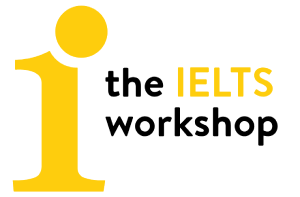
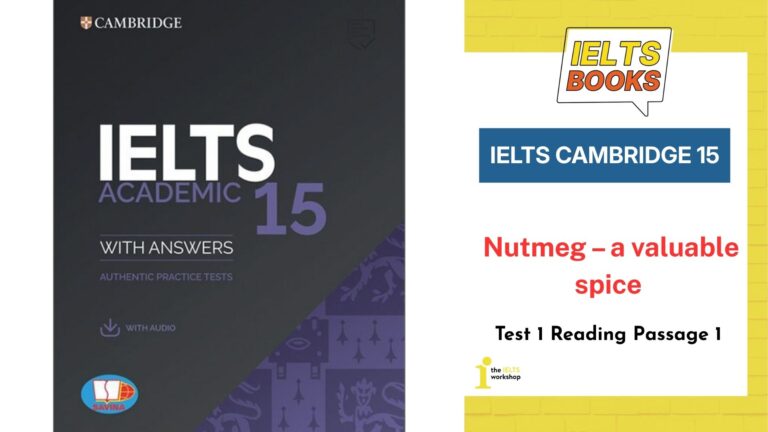
![[PDF + Audio] Trọn bộ Cambridge Practice Tests For IELTS 1 – 20 mới nhất](https://onthiielts.com.vn/wp-content/uploads/2020/04/cam-1-14-764x400.jpg)
![[PDF + Audio] Cambridge IELTS 20: Cập nhật mới nhất (Bản đẹp)](https://onthiielts.com.vn/wp-content/uploads/2025/07/Cambridge-IELTS-20-300x169.jpg)
